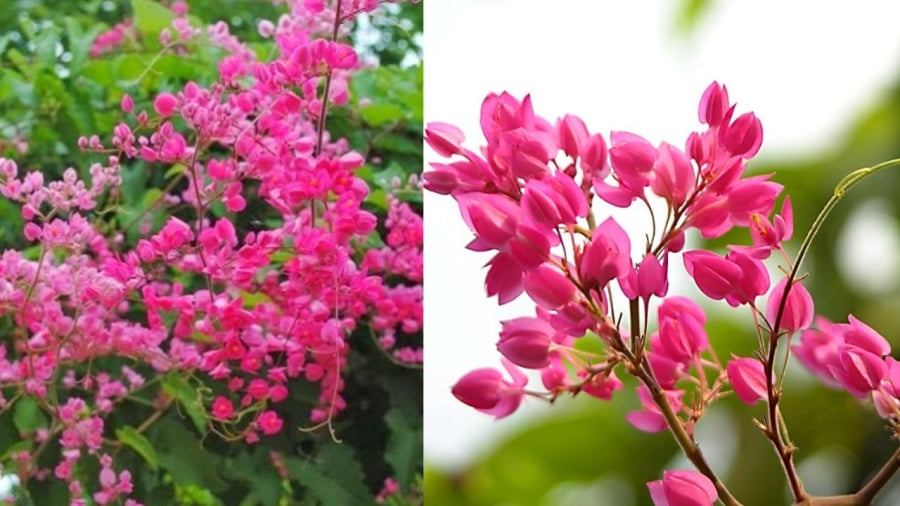What is the Feng Shui Significance of Planting Tigon Flowers?
Planting Tigon flowers as a climbing vine in front of your house or along the side of your home is a popular way to incorporate this beautiful flower into your garden. Tigon flowers are known for their small, delicate blooms that come in a variety of colors. The unique shape of the flowers and leaves, which resemble hearts, adds a romantic touch to any space.
The story behind the Tigon flower is one of heartbreak and sadness. Originating in Mexico, the flower is named after a girl named Tigon, and even after it made its way to Vietnam, it still carries the romantic and melancholy air of a love story filled with regret and separation.

The Enchanting Beauty of Tigon Flowers
Despite its melancholy appearance, the Tigon flower exudes a sense of purity and elegance rather than gloom and doom. Each leaf and bloom reaches upward, symbolizing resilience and a desire to overcome adversity. The trailing tendrils seem to yearn for a better life.
In Vietnam, Tigon flowers come in a variety of colors, each with its own unique meaning:
- White Tigon: Symbolizes purity and innocence.
- Pink Tigon: Expresses love and affection, as well as a sense of longing and emotion.
- Red Tigon: Represents passionate love and, in some Western cultures, is seen as a symbol of true love.
The most commonly planted Tigon flowers are pink and white.
Feng Shui Placement of Tigon Flowers
As a climbing vine, Tigon flowers are best suited for the front of your home or along a fence or trellis. For those living in apartments, Tigon flowers can be planted in pots with a stake for the vine to climb. Tigon flowers thrive in warm, sunny conditions, so be sure to place them in a spot that receives ample sunlight. You can also train the vine to grow along the front of your home, starting from the first floor and climbing upwards. Alternatively, you can plant Tigon flowers in front of or around the perimeter wall of your house.
For young couples and families with daughters, planting Tigon flowers is believed to attract positive romantic energy and enhance family harmony. According to Feng Shui beliefs, individuals born in the Year of the Pig are particularly well-suited to growing Tigon flowers, as it is thought to bring peace and happiness to their relationships.
How to Grow Tigon Flowers
Growing Tigon flowers is relatively straightforward. You can propagate Tigon flowers through stem cuttings. To ensure the healthy growth of your Tigon vine, keep the following care tips in mind:
- Soil: Tigon flowers prefer well-drained, nutrient-rich, loose soil to encourage abundant blooming. Avoid waterlogging.
- Light: As a sun-loving plant, Tigon flowers require ample sunlight, ideally 5-6 hours per day. When the plant is young, avoid direct sunlight, but as it matures and enters the blooming phase, increase sunlight exposure.
- Watering: While Tigon flowers don’t like waterlogged soil, they do require daily watering.
- Fertilizer: To support the vigorous growth of Tigon vines, fertilize every two weeks with a balanced fertilizer. Avoid fertilizing at noon, and apply fertilizer away from the base of the plant.
- Pruning: Prune your Tigon vine regularly to maintain a tidy appearance. Remove old, woody stems to encourage more blooming.
Tigon flowers come in a variety of colors, so feel free to plant a mix of colors together to create a vibrant display. Just remember to provide a trellis or support for the vines and ensure the planting area is well-maintained to prevent it from becoming a habitat for snakes, insects, and mosquitoes. If your Tigon vine is growing over an archway or gateway, be sure to keep the vine pruned to avoid obstructing the path.
Information provided is for reference only.



































